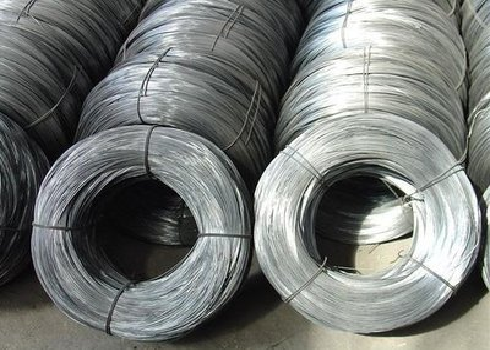SunSirs: Demand Was Weak, and the Price of Wire Rod and Rebar May Fluctuate Within a Narrow Range
August 19 2025 11:24:41 SunSirs (John)
Price trend
According to SunSirs price monitoring, rebar and wire rod prices in the Jiangsu, Zhejiang, and Shanghai regions fluctuated within a narrow range last week. As of the 15th, the average price of HRB400 rebar in these regions was approximately 3,331 RMB/ton, down 0.02% week-on-week; the average price of HPB300 high-strength wire rod was 3,457.5 RMB/ton, down 2.26% week-on-week.
Analysis review
Market:
Coking coal prices rose last week, driving up market sentiment, supporting raw materials, and the market's willingness to push up prices. Markets across the country raised prices one after another, but the overall demand in the terminal market was weak, so rebar and wire rod prices fluctuated narrowly last week.
Supply Side
Last week's building materials output reached 3.0332 million tons, a slight decrease of 2,000 tons from the previous month. Rebar production decreased by 7,300 tons. Regionally, Northeast China, South China, and East China saw slight declines, while the rest of the country saw slight increases. Hebei and Hubei provinces saw the largest increases, driven by the resumption of rolling mills and adjustments to product lines at some steel mills. Liaoning and Shanxi saw slight decreases in output due to maintenance shutdowns and hot metal transfers at some mills. Wire rod coil production saw a slight increase of 7,100 tons last week. From a regional perspective, the increase was mainly concentrated in East China, with supply increasing by 9,700 tons, while production in other regions generally saw slight adjustments. From a provincial perspective, Zhejiang Province saw a significant increase, with weekly production increasing by 10,000 tons, while Shanxi Province saw a weekly production decrease by 8,300 tons. Production in other regions saw slight fluctuations. For hot rolled coils, production increased slightly last week, with a weekly increase of 7,000 tons. There were no new production lines under maintenance or resumption of production last week, and production at all manufacturers was relatively stable, with no significant fluctuations in output.
Inventory
National building materials inventories reached 4.8018 million tons last week, a week-on-week increase of 287,300 tons. Factory inventories showed an upward trend last week, increasing by 77,100 tons month-on-month. Regionally, with the exception of North China, where inventories saw a slight decrease, inventories in all other regions showed a slight accumulation. Sichuan, Hubei, and Xinjiang saw the largest increases in inventories among provinces. For wire rod coils, factory inventories saw a slight increase last week, totaling 36,500 tons. Regionally, inventories in East China, North China, and South China saw the largest increases, with increases of 15,600, 17,700, and 13,800 tons, respectively. Mill inventories in other regions fluctuated slightly to varying degrees. Provincially, Guangdong saw the largest weekly increase, with a weekly increase of 16,800 tons. Across the three major regions, East China, South China, and North China saw weekly increases of 189,800 tons, 56,500 tons, and 18,300 tons, respectively. Across the seven major regions, all but Northwest China showed an accumulation of inventories. In terms of hot rolled coils, from the perspective of the three major regions, the north reduced inventory by 29,300 tons week-on-week, while East China and South accumulated inventory by 4,000 tons and 12,700 tons week-on-week respectively; from the perspective of the seven major regions, except East China, Central China and South China, other regions showed a destocking state.
On the demand side
Last week, the national average weekly trading volume was 102,280 tons, down 1,120 tons from the previous week. While trading activity declined, it remained above 100,000 tons. Downstream demand continued to decline, with trading driven primarily by sentiment and speculative trading. This was primarily due to the gradually warming weather, which had limited downstream production capacity, hindering the release of steel demand.
Future outlook:
To sum up, analysts from SunSirs believe that under the high temperature weather, the release of lower-end demand was weak; as for steel mills, production profits had been restored after the increase in steel prices, and the production situation of steel mills had been supported. The supply and demand of rebar and wire rod may maintain a weak supply and demand trend, and the destocking process of social warehouses was limited. At this stage, the price trend of rebar and wire rod is mainly driven by market sentiment. It is expected that prices may rise first and then fall next week, and fluctuate in a narrow range.
If you have any inquiries or purchasing needs, please feel free to contact SunSirs with support@sunsirs.com.
- 2025-12-11 SunSirs China's Steel Industry Transformation: Prioritizing Quality
- 2025-12-10 SunSirs: Rebar Supply-Demand Imbalance Remains Subdued
- 2025-12-09 SunSirs: Steel Mills Cut Output, Inventories Decline; Focus on Key Meeting Drivers
- 2025-12-04 SunSirs: China’s Urban Steel Inventory Drops 1.42 Million Tons MoM
- 2025-11-28 SunSirs: With both Supply and Demand Weak, Wire Rod and Rebar Futures May Decline in the Latter Half of the Week



